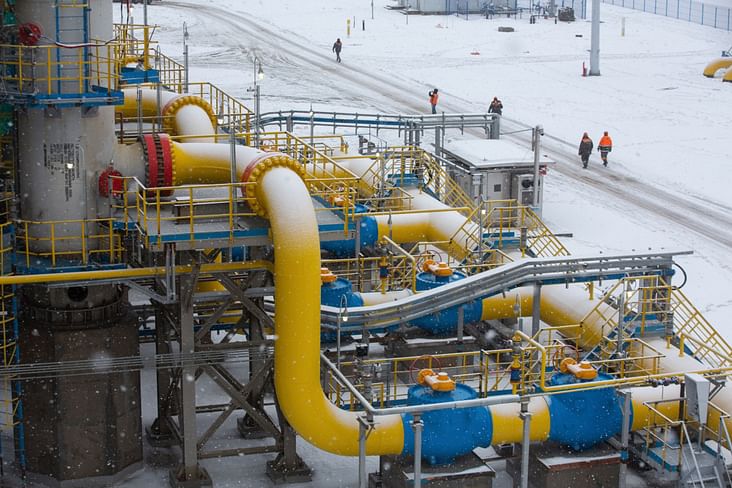Oil rallies to 7-year high as Opec+ meet and IEA warns of energy security threat

Oil rallies to 7-year high as Opec+ meet and IEA warns of energy security threat.
TGO: Oil prices rallied to a seven-year high as Opec+ producers meet on Wednesday and the International Energy Agency (IEA) warned of an energy security threat as the Ukraine-Russia crisis intensifies.
Brent, the global benchmark for two thirds of the world’s oil, was 6.28 per cent higher at $111.56 per barrel at 10.58am UAE time on Tuesday. West Texas Intermediate, the gauge that tracks US crude, was up 6.26 per cent, trading at $109.88 a barrel.
The IEA agreed on Tuesday to release 60 million barrels of oil from emergency stocks to bring stability to energy markets as the Russia-Ukraine crisis intensifies.
The Paris-based agency said Russia’s military offensive had come against a backdrop of “already tight global oil markets, heightened price volatility, commercial inventories that are at their lowest level since 2014 and a limited ability of producers to provide additional supply in the short term”.
“The situation in energy markets is very serious and demands our full attention. Global energy security is under threat, putting the world economy at risk during a fragile stage of the recovery,” IEA’s executive director Faith Birol said.
Russia, one of the top crude producers in the world, has come under a slew of sanctions targeting its economy and banking industry but not its energy and commodity industries.
In 2020, the country produced about 10.2 million bpd of crude oil and natural gas condensate, placing it second after the US, with Saudi Arabia in third place, according to the 2021 BP Statistical Review of World Energy. About 60 per cent of Russia’s oil exports go to Europe and another 20 per cent to China.
The IEA oil release and more Opec+ barrels “will not derail the powerful bull oil market”, said Ehsan Khoman, head of emerging markets research at Japan’s largest lender, MUFG Bank.
“The immediate rally in oil prices is a testament that markets are already looking through the {IEA] announcement and remain squarely focused on the extreme state of shortage oil markets are in today corroborated by the super backwardation levels with Brent crude prompt time spreads currently trading $5 a barrel above the next month – an unprecedented level that indicates trades are paying huge premiums to secure more immediate supply,” Mr Khoman said.
The Opec+ 23-member alliance of oil producers will discuss bringing additional crude supplies to the market. Despite rising concerns about a possible disruption to global energy flows in an already tight market, the group is expected to stay the course and bring another 400,000 barrels per day of crude to the market in April.
Following a virtual meeting of the bloc’s Joint Technical Committee on Tuesday, Opec secretary general Mohammad Barkindo reiterated the group’s role in bringing stability to the oil markets since its members struck a co-operation agreement in December 2016.
“No matter what challenges we may face, our efficacious and proven … framework will continue to be the modus operandi for our joint success and help move us, step by step and day by day, closer to achieving our common objectives,” he said. “This nimble and measured approach will once again pay off.”
“We will continue monitoring these developments very closely in the days and weeks to come,” Mr Barkindo said.
Still, Jeffrey Halley, senior market analyst at Oanda, said the “uncomfortable fact is that Opec compliance is well above 100 per cent anyway, meaning they are pumping as much as they can, so even an announcement theoretically larger increase would not materially impact markets for more than the short-term”.
“As the realities of the Ukraine-Russia situation bite once again, I intend to stick to my view that Brent crude will top $120 a barrel and could trade near to $130 a barrel. That will be the price of the world holding its nerve to cripple Russia’s economy.”
Global oil demand is projected to rise by 4.2 million bpd this year, according to Opec’s latest monthly oil market report.


